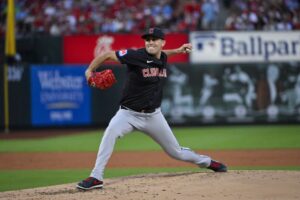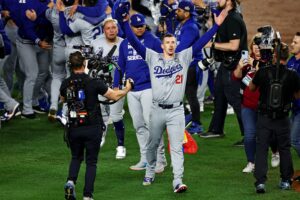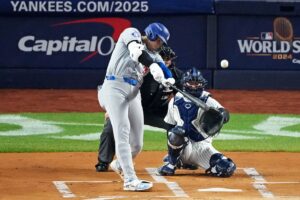County Stadium, Milwaukee, April 25, 1981
Let’s hop in the way-back machine and visit a simpler time when George Brett was playing third base. The Milwaukee Brewers were still in the American League. MTV was playing around the clock music videos. Pacman-mania was sweeping the country. And George Brett used his glove for a comb. Wait, his what for a what? Let me explain.
It was the middle of the fifth and George Brett needed to get his hair out of his face. So, naturally, he used his well-oiled, deep-pocketed mitt instead. Seems logical, and inventive, right? It is. But not as logical, inventive, or game-changing as the execution of the Kansas City Royals defense in the bottom of the fifth.
The Setup
On a brisk Saturday afternoon in Milwaukee, County Stadium was sparsely populated with blanketed Brewers fans watching their boys battle it out with last year’s AL Champions and the reigning MVP, George Brett. The Royals were playing like it was 1980 again.
Top of the First
The Royals scored three.
Brett drove in his first RBI of the season on a poke job between first and second. The fleet-of-foot Willie Wilson scored from second.
Willie Aikens followed Brett and destroyed a quarter of the box with his back foot. Why did Big Willie do this? Because Aikens likes to cheat his back foot out of the box and every little bit can help. Luckily for the Royals it did when he smashed one over the right field fence. The only thing Brewers right fielder Gorman Thomas could do is crane his neck and watch it go.
Bottom of the Third
The Brew Crew put one on the board on a deep shot by Thomas. Thomas’ center field blast made the game a bit more respectable and set up the brilliance, and importance, of the melodrama that was to play out in the bottom of the fifth.
The Puzzle of the Brewers Fifth Goes As Follows:
Piece One:
Ted Simmons, the switch-hitting catcher from Highland Park, Michigan, led off the inning and reached first on a throwing error by U L Washington. Aikens should have scooped Washington’s mishap, but the official scorer thought otherwise, and here we are.
Piece Two:
Thomas, who had already strained his neck and put one in the seats, walked on a full count.
Piece Three:
An iconic scene in baseball: the mound visit.
Jim Frey, the Royals manager who led them to their first-ever AL pennant the previous season, needed to slow the Brewers rally machine down. Frey did this by walking at a near-snail’s pace out to Larry Gura.
Gura has had a good day, his only two mistakes are attributed to Thomas’ home run in the third and the recently issued walk. Gorman has Larry’s number.
The Mullet (George Brett) and catcher John Wathan joined Frey and Gura at the mound. Who knows what they said, but it’s probably something along the lines of what pitches to throw, what is the batter going to do, and how should the fielders be positioned.
And, as all good mound visits are broken up eventually, plate umpire Lou Dimura dispersed this party of four.
Piece Four:
As Frey ambled back to the dugout, George Brett said something nondescript to Washington at short, who then said something equally as nondescript to Dave Chalk at second. It was a regular old game of telephone. What was said does not matter. The setup was on.
Piece Five:
Brett cheated in at third. This was the first move of the con. He played even with the bag, seemingly to get the jump on a sure-to-be-bunting Don Money.
Money squared up on the first pitch.
Piece Six:
Gura threw the perfect pitch to get an offending bunter to pull the bat back: an inside curve.
Bunting an inside curve is like fishing without bait.
Ball One.
Piece Seven:
Between pitches, Brett briefly visited Gura on the mound. Who knows what he whispered in Gura’s ear, and who cares? The water had been tested and there was bait on the hook. It was time.
Piece Eight:
Piece eight is similar to piece five, it is like the snow in the Christmas puzzle that looks the same but is cut differently. Brett cheated in at third, but this time he broke for the plate early, leaving third open to the greedy eyes of Simmons, who was dancing off second.
Piece Nine:
Washington deked to third, triggering a starting gun in Simmons’ brain. Simmons broke for third.
Piece Ten:
Chalk tiptoed through the tulips to second. Chalk, a two-time All-Star when he was with the then-California Angels, was at his catlike best. Simmons had no idea that he was being hunted, which is how it should be.
Piece Eleven:
The pick. Simmons was in no man’s land, breaking to third when he saw what had happened.
He must have mumbled a profanity under his breath.
The previously unaware base coaches yelled, “Back, back, back!” But everybody knew the hunt was over.
Piece Twelve:
The knee.
Simmons dove back to second in vain, for second was hidden behind Chalk’s articulation.
Piece Thirteen:
Tag, you’re out. Puzzle completed.
The Well-Oiled Comb Strikes Again
With all the momentum gone, the Brewers crumbled. Although this was only the first out of the inning, one cannot underestimate the importance of killing the rally just as it was getting started. The Royals pulled off a great play and turned the offensive rally into a defensive one. Money, who surely suffered from a low-grade PTSD as a result of the pick at second, went down looking, unable to pull the bat off his shoulder. And “Gumby,” Milwaukee’s crown prince of the double play — Jim Gantner — grounded out to Brett. The well-oiled comb strikes again. Inning over, along with the only real chance that the Brewers had. Ballgame.
Main Image
Embed from Getty Images






